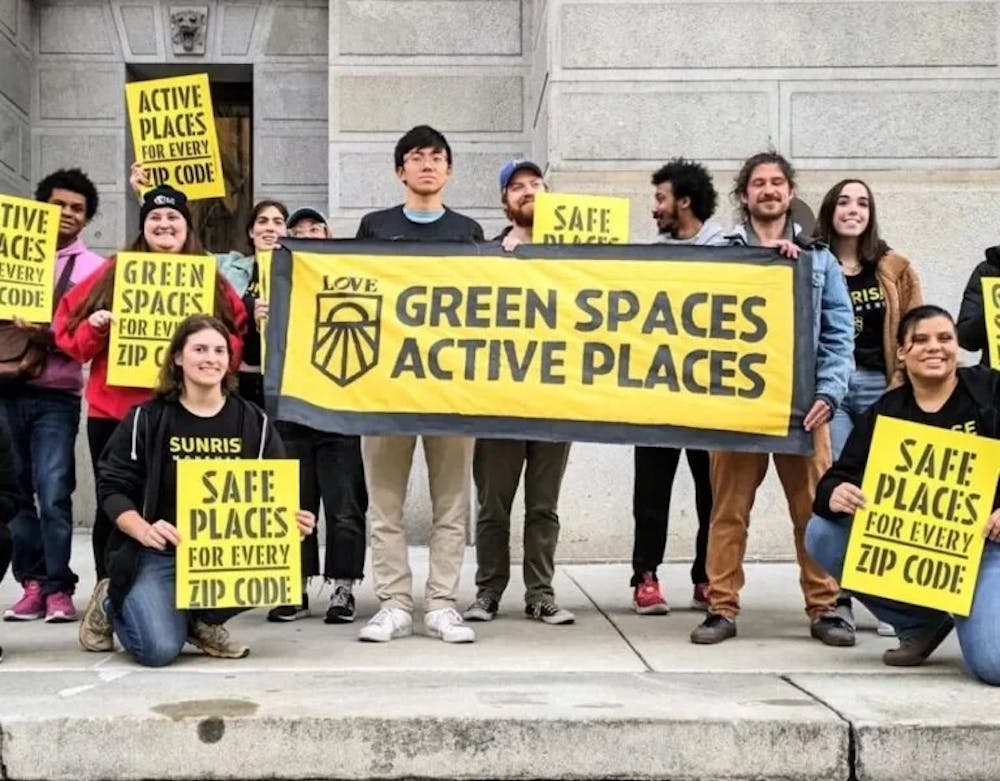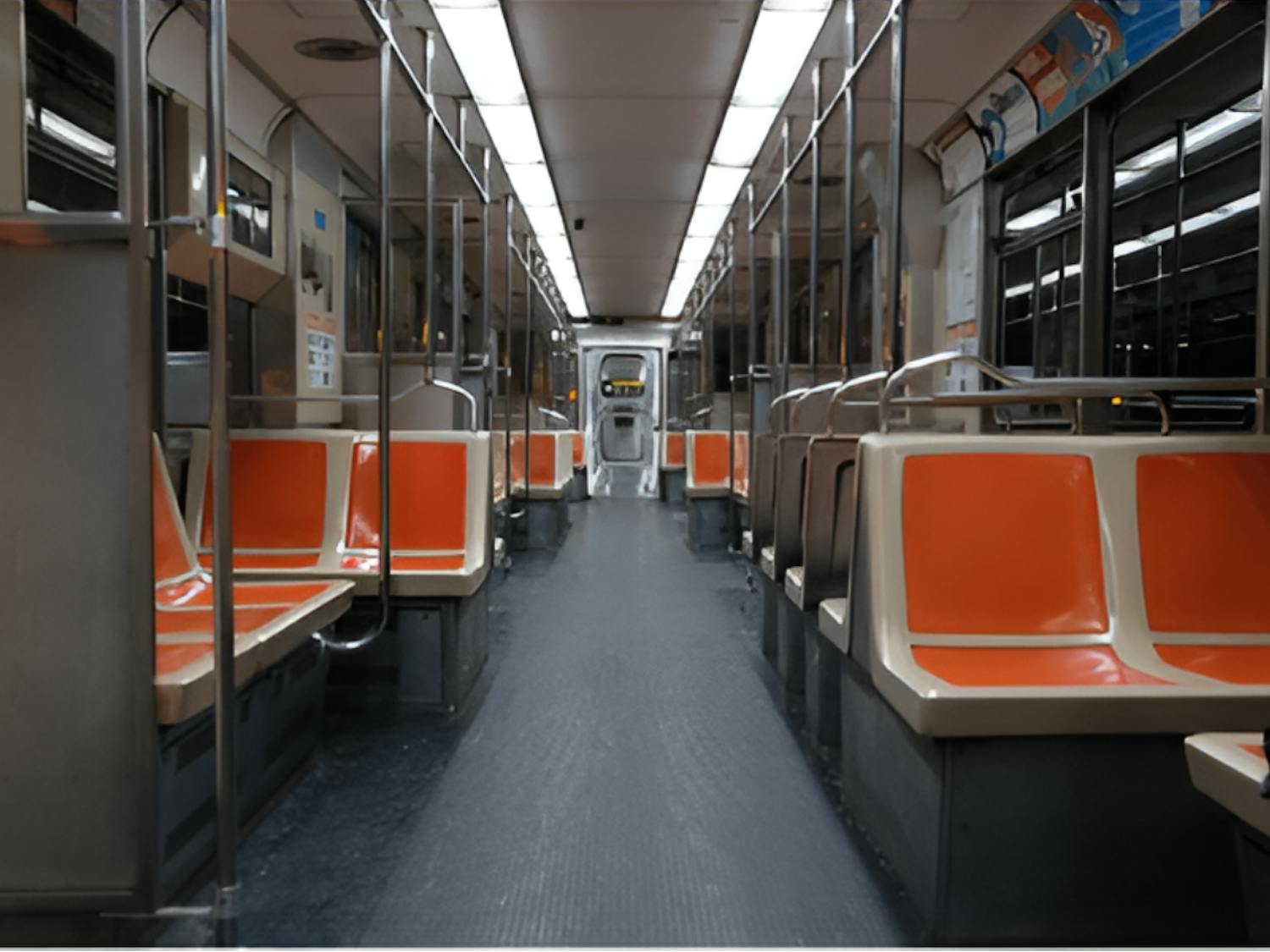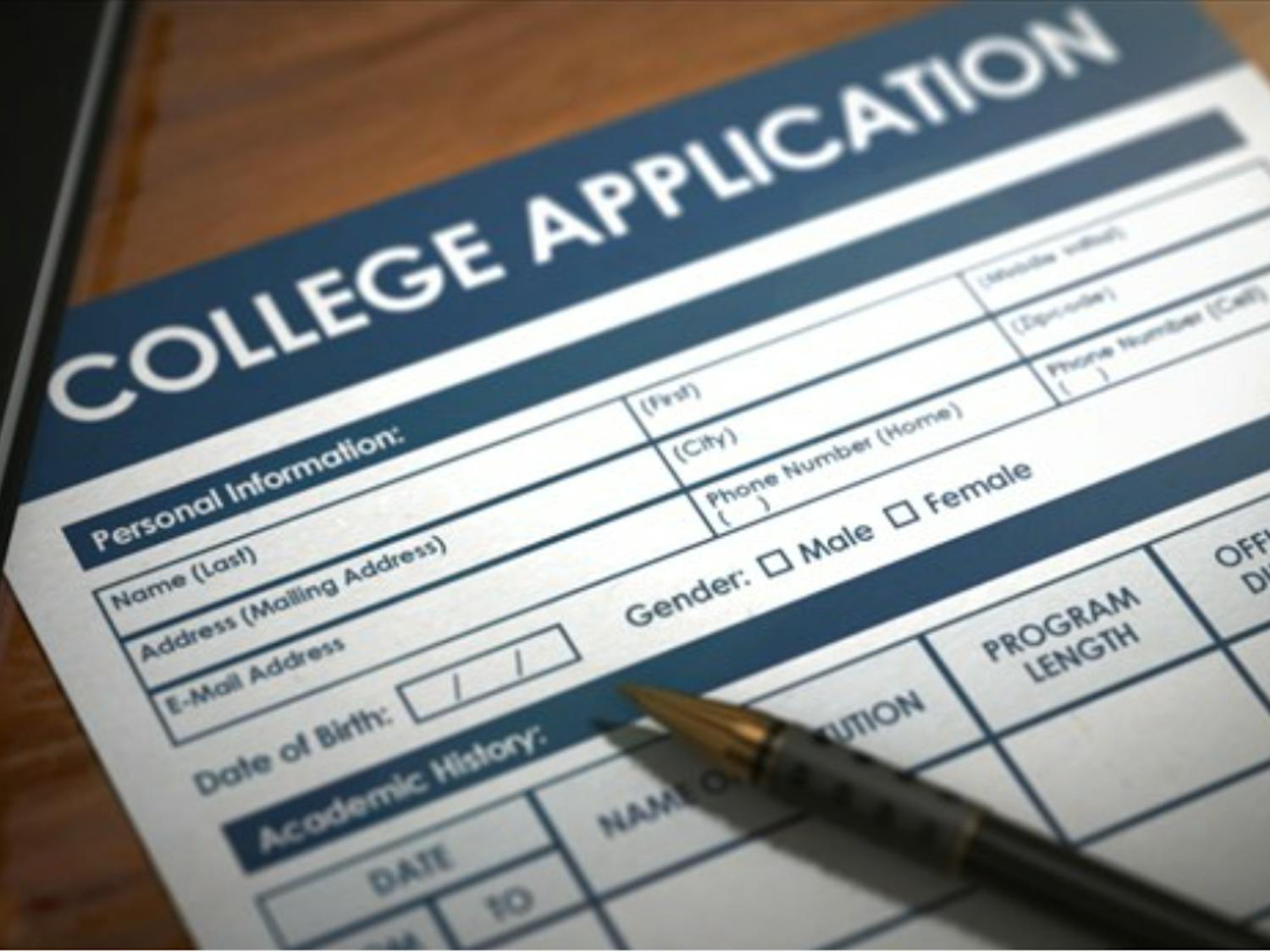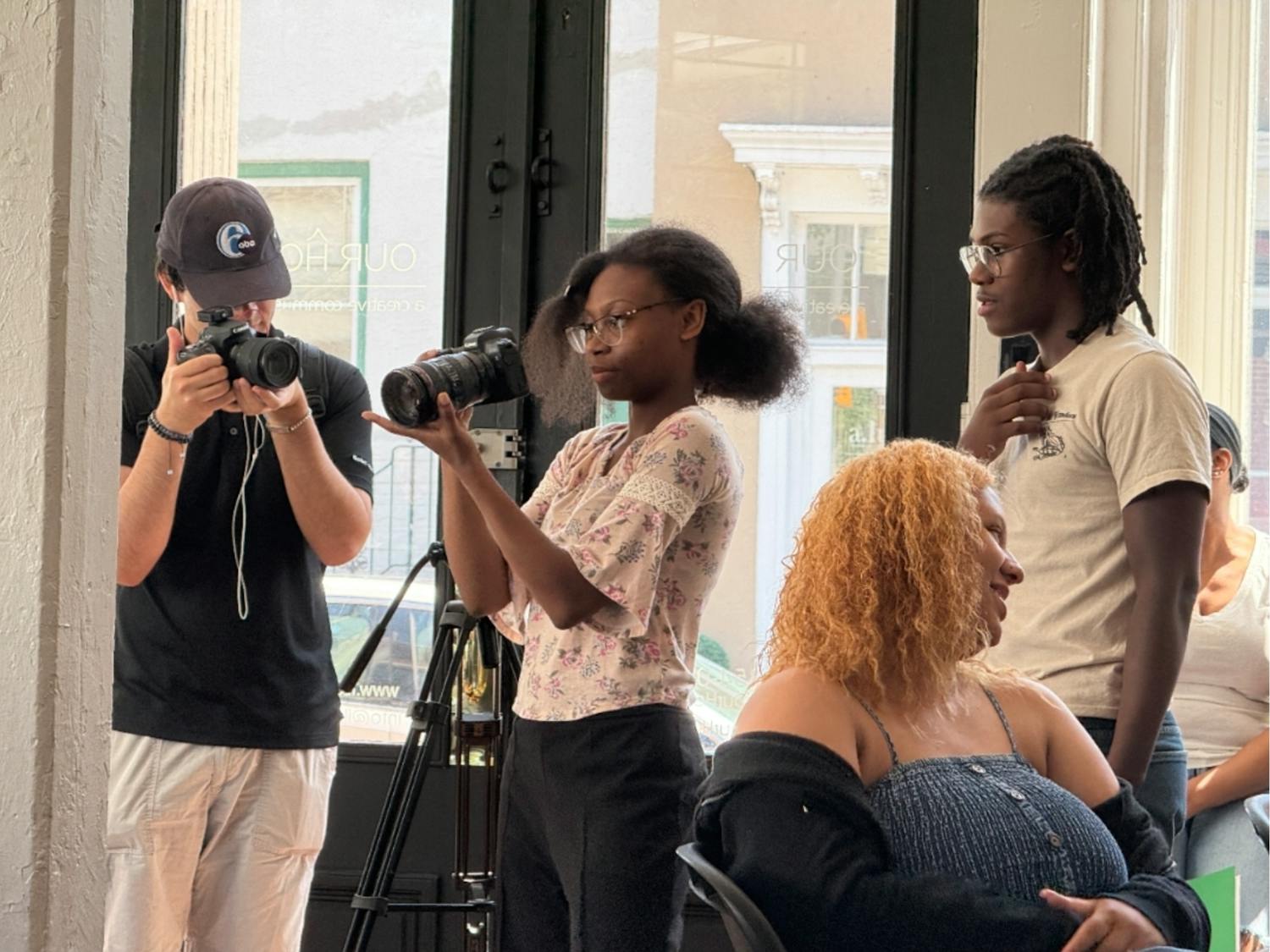Every day begins with sunrise. It symbolizes a fresh start, new future, and beginnings. The spirit of the simple, beautiful, and constant sunrise takes shape in the Sunrise Movement.
The Sunrise Movement is a national youth focused climate non-profit that aims to “force the government to end the era of fossil fuel elites, invest in Black, brown, and working-class communities, and create millions of good union jobs.”
By keeping the people at the center of everything they do through their mission to “put everyday people back in charge and build a world that works for all of us,” The Sunrise Movement believes there will be a day when the sun will rise and there will be environmental justice for everyone.
This day won’t appear out of thin air, though. Through hope and action, this organization, made up of passionate volunteers, fights to make this day a reality.
The Sunrise Movement was started by Sara Blazevic and Varshini Prakash on the East Coast. They both trained at an organization called Momentum which focuses on teaching people how to do effective community organizing.
In 2017, The Sunrise Movement officially launched as a 501(c) right before the 2018 midterm elections. The movement began to pick up traction after half of the group's 20 endorsements won their given elections.
After these elections, The Sunrise Movement channeled their organizing efforts on the Green New Deal. Some of the most notable campaigns from Sunrise have been the Wide Awake campaign of 2020 where members would protest outside of politicians houses early in the morning, as well as the 2018 Pelosi Sit In, the climate change debate campaign where activists slept on the steps of the DNC office in Washington.
In 2019, they also led the Road to a Green New Deal Tour that traveled to multiple cities to educate over 200 town halls activists and local political leaders on the Green New Deal and its importance.
Not all of these actions and campaigns were successful, but the Sunrise Movement has been instrumental in mobilizing the young generations of voters, passing historic climate legislation, and transforming the democratic party.
It is impossible to thoroughly discuss the Sunrise Movement without discussing the Green New Deal, as it is so central to their mission and actions. According to the Green New Deal Group, the Green New Deal was named after Franklin Delano Roosevelt’s New Deal.
The New Deal developed as a multifaceted economic plan in 1933 to address the Great Depression.
It is a great example of successful federal programming that provided relief to millions of Americans and revitalized the economy. Likewise, the Green New Deal aims to do the same, but with a climate focus.
Enjoy what you're reading?
Signup for our newsletter
What made the New Deal so successful was that it was made up of “well targeted interventions that can address more than one problem at once.”
Created during the recession of 2008 by a group of British economists and environmentalists, the Green New Deal adopts this strategy attacking many structural problems with the triple focus on economy, ecology, and democracy.
The movement gained little traction until Alexandria Ocasio-Cortez introduced the Green New Deal to the United States during her run for Congress ten years after its original conception.
Soon after, the Sunrise Movement took on advocacy for the Green New Deal. In its national mission statement, it explains one of its main goals as an organization is to “win a Green New Deal.”
The New York Times reports that the Green New Deal makes big demands like the “world must get net-zero emissions by 2050.” It also “calls on the government to create high-paying jobs, ensure that clean air, clean water and healthy food are basic human rights, and end all forms of oppression.”
Their “10-year plan (...) envisions sourcing 100 percent of the country’s electricity from renewable and zero-emissions power, digitizing the nation’s power grid, upgrading every building in the country to be more energy-efficient, and overhauling the nation’s transportation system by investing in electric vehicles and high-speed rail.”
The plan also promises to keep social justice at the center by explaining that the government must “provide job training and new economic development” for vulnerable fossil fuel dependent communities.
Many people and politicians say that the Green New Deal is impossible— That it is too controlling or expensive. Former President Trump claimed that the Green New Deal would cost “$100 trillion”; activists argued against this claim saying that the effects of “climate change would be equally costly to the American economy.”
Still, it remains impossible to produce accurate figures about the true cost of the plan or the costs of climate negligence. Others are afraid that the Green New Deal will take away too many of their sacred indulgent “rights”.
For example, Senator John Barrasso, Republican of Wyoming and chairman of the Committee on Environment and Public Works warns that “livestock will be banned.” Trump adds to this, believing that the plan will take away his “airplane rights.” However, neither of these claims are fully supported by the actual plan.
The Green New Deal has not happened yet, but the advocacy for its implementation persists. The fight for the Green New Deal has paved the way for the first piece of climate centered legislation signed into law by President Joe Biden in 2022.
Inspired by the Sunrise Movement, the Green New Deal has returned to the UK with a specific parliamentary group dedicated to it. The Global Alliance for a Green New Deal has been signed by over 300 politicians and continues to gain traction. Even with present progress, the fight continues, spearheaded by the Sunrise Movement.
In order to strengthen and spread the messages of Sunrise and to achieve Sunrise National’s goals, the movement is made up of 100+ hubs across the country. Hubs can fall under three different categories: chapters, community hubs, and student hubs.
Chapters have at least 30 members and sometimes have live-in options called Movement Houses.
They lead multi-year activism campaigns. Community hubs run shorter campaigns and work to get more politicians and leaders on board with the Green New Deal; they typically have 5-30 members.
Finally, student hubs are based within schools that introduce the Green New Deal for Schools and usually have at least 5 active members.

Sunrise Philly is a Chapter and is divided into six teams: Actions, Base Building, Onboarding, Communications, Wellness, and Power-Mapping. This structure allows members to play to their strengths and work together to be successful.
Despite official teams, Sunrise’s structure is distinct because members can participate and collaborate across teams.
Its mission is to utilize people power (public support) and political power (elected officials) to create a sustainable city.
The Chapter runs with the mission of being a “movement that brings together passionate people from across race and class to build a diverse coalition, working together towards our collective vision of a thriving, socially just and sustainable Philadelphia.”
Members of the Sunrise Philly chapter keep these values and this guiding mission at the center of everything that they do, including their most recent campaign.
Sunrise Philly launched a new campaign at City Hall on October 16th, 2023.
The title of the campaign is “Green Spaces, Active Places” and it demands that “City Council and the Mayor must fully staff, expand, and repair public rec centers, libraries, and gardens to prevent gun violence and the climate crisis.” To achieve this goal, the Sunrise Movement has developed a four pronged “Green New Deal for Community Spaces.”
The first demand of the Green New Deal for Community Spaces is that the city government “fully fund and staff rec-centers and libraries to keep them open longer and have more programming.”
This means that all 156 rec centers would be open seven days a week, and all 54 library branches would be open 6 days a week during both after school and evening hours.
To make this possible, new staff would have to be hired so that the current staff would not be forced to overwork and burnout. It is important for the government to invest in keeping libraries and recenters open and well staffed because, as The Atlantic in their AEI Survey on Community and Society finds, across social classes, education, gender, and race “community-oriented public spaces brings a host of social benefits, such as increased trust, decreased loneliness, and a stronger sense of attachment to where we live.”
Another study published in the Journal of Learning Spaces conducted at the University of Ghana emphasizes “the importance of investing in social development” like public libraries “to improve lifelong learning.” Investing in our community spaces, means investing in our own well being, happiness, and education as individuals and as communities.
The second demand of the Green New Deal for Community Spaces is that the city government must “repair every rec-center and library so they are safe, accessible, and run on 100% renewable energy by 2030.”
This ambitious goal would require basic repairs to every building, adding ramps and elevators to comply with ADA standards, increased energy efficiency using air sealing, heat pumps, cooling centers, rooftop solar, solar battery storage, and flood mitigation.
These repairs would begin with communities who are most in need with high rates of gun violence, poverty, and climate impacts. Sunrise Philly also demands that the government fund the Rebuild to assist with these developments. T
he government must listen and respond to the wants and needs of the community members immediately and provide substitutes while these spaces are being reconstructed.
With global temperatures warming past 1.5 degrees celsius, it is vital that these community centers are rebuilt to combat climate catastrophe.
The third demand of the Green New Deal for Community Spaces is to “create public community gardens that grow fresh food,” including adding greenery and trees to land surrounding other community spaces.
By using city owned vacant lots and transferring them to Parks & Rec inventory, it would allow community members to create gardens using this open land. Other programs are also designed to create public gardens for the people.
The Farm Philly program, which is under the umbrella of Philadelphia Parks and Recreation, was founded to support public farms, composting programs, and the right to grow food for all.
Farm Philly is based on the recommendations from the Urban Ag plan. The Urban Ag plan, called “Growing From the Root'', a 200-page document that outlines the importance of Urban Agriculture and how to implement values of environmental justice in every step of the food system for Philadelphia.
It outlines the importance of urban agriculture and how it “connects food, land, the environment, and culture across generations” and is a “powerful practice in economic, climate, land, and racial justice.”
One urban grower eloquently describes how urban agriculture is “a practice that breeds resistance through community control over our backyards and the open green spaces that still exist under capitalism.”
Access to green spaces is a human rights issue, it is necessary to invest in urban agriculture for this reason.
The fourth and final demand of the Green New Deal for Community Spaces is to “create family sustaining union jobs and training programs to accomplish all of the above.”
It would be negligent for Sunrise Philly not to address that these demands will never become reality without the “people power” that is so essential to their mission.
By hiring qualified city union workers for jobs in community spaces that provide healthcare and a minimum of $22/hour, that “people power” could be channeled into these goals.
Providing people with job opportunities is essential with more than 20% of Philadelphia’s population living below the poverty line.
Sunrise Philly also demands that the government invest in city job training programs like Power Corps PHL, Built to Last, and the Philadelphia Energy Authority. Within the city of Philadelphia, there are enough people to make these demands happen, and it is this agency that will drive the plan during its implementation.
Sunrise Philly has put their words into action as they spread their “Green Spaces, Active Places” campaign. Prior to and after the launching of the campaign, Sunrise has been setting up “pop up public spaces” like mini rec centers with activities and stacks of books for kids to read. Despite being stopped by security teams at Dilworth Park by having these spaces, they persisted.
Another approach that Sunrise takes are roadblocks and protests at Rittenhouse, the Art Museum, and the Thanksgiving Day Parade. In doing so, they receive public attention and are able to demand action from political leaders.
For example, Sunrise has demanded that Mayor Cherelle Parker meet with them about their campaign and have worked with her in the past. As a candidate, Parker expressed on the Parks & Rec Heroes Teen Podcast her goal to, “at least double our investment (in Parks & Rec) by the end of my first term.”
Earlier this year, activists from Sunrise interviewed Cherelle Parker as she showed her support for the campaign. Sunrise has also met with Mayor Parker prior to the draft of the city funding for the year.
Now that the draft has been published, the movement is frustrated with the slim funding for Parks & Rec.
The final draft will be submitted in July, and activists are demanding a meeting with Mayor Parker before it is submitted. Sunrise has also testified at City Council about “Green Spaces, Active Places.”
In addition to these in-person actions, the movement has also held monthly hub meetings and information sessions to educate the public and recruit new passionate members.
With recent actions, as with most activism, the movement has received mixed responses. One community member Teena expressed her support for the Sunrise Philly in her car in a standstill because of the Rittenhouse blockage.
She said, “I work with young people and those open rec centers would absolutely be an outlet for incredible support, community…we are doing our young people a disservice by having them shut down.”
Other people who were blocked by the activists were understandably frustrated by the action and how it inconvenienced them, not the Mayor. The Sunrise Movement National and its branches are not perfect and have come under scrutiny for not supporting nuclear power, for antisemitism, and for some of their actions having unexpected consequences.
Regardless, the movement is one worth supporting.
Sunrise Philly is an organization that is making impactful change, and it is necessary for us as citizens to support this.
One of the core principles of Sunrise Philly and the greater Sunrise national is the idea of people power: “hundreds of thousands, and even millions, of people coming together across race, class, zip code, and identity in a unified movement.”

Sunrise will not be successful without us, the people supporting them. The world is full of crises, it is vital to come together in the face of them. Support or get involved with Sunrise Philly today.




